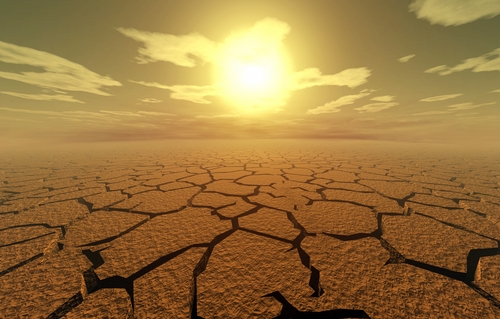Podcast: Play in new window | Download
Subscribe: RSS

This drought, in Texas, was caused by La Niňa, off Peru. But don't worry, the tooth fairy will fix it.
It was one of those articles that subtracted from the sum total of human knowledge. It appeared on the respected Reuters news service, and began: “The dreaded La Niňa weather anomaly, blamed for both drought and record snowfall in the U.S., has returned and will garner strength during the coming winter, the Climate Prediction Center forecast Thursday.” The logical equivalent would be you — on finding your car doesn’t start in the morning — taking your ignition key to the shop and demanding that it be fixed. Because you “blame” it for the problem.
To pick the low-hanging fruit first: La Niňa is not an “anomaly,” which Merriam Webster defines as something “different, abnormal, peculiar or not easily classified.” La Niňa and her opposite number, El Niňo, comprise what meteorologists call the Southern Oscillation, a regular variation in sea-surface temperatures and air pressure that has about a five-year cycle. It has been observed since the 19th Century, and is about as “anomalous” as a thunderstorm.
But the Reuters piece insists: “El Niňo is an abnormal warming of waters in the Pacific.” The writer may have been confused by the fact that these regular, normal events involve a departure of sea-surface temperatures from their long-term normal.
But the worse error in the way this article and most journalism describes the Southern Oscillation is in the attribution of cause and effect. La Niňa is “blamed for both drought and record snowfall in the U.S.,” and “often linked to the ramping up of storms in the Atlantic basin which threaten oil rigs in the Gulf of Mexico.” And El Niňo “led to the failure of India’s vital monsoon in 2009/10. “
The reality is unimaginably complex, and while simplifications are necessary for anyone to grasp what is really going on, bogus simplifications subtract from human knowledge. Our planet is clothed with liquids; a thin coating of air (which is, technically, a liquid) over all and a layer of water over two-thirds of the surface. Both layers are heated intensely at the Equator and not at all at the Poles, and everything they do is a response to that fact: they move heat away from the Equator.
This circulation moves laterally, as wind in the air and currents in the ocean, and vertically. It is not well understood that there are three vertical loops of air circulation (called Hadley Cells) between the Equator and each Pole. There are similar, vertical circulations in the ocean, and when they bring cold water to the surface the result is called upwelling.
It is complicated enough that all this circulating, caused by the sun, is affected by topography, by uneven absorption of heat, and by myriad other variables, and is occurring on a spinning globe that twists and intermixes everything. But beyond that, the sea’s circulation is affected by the air’s, and vice versa.
It is the periodic faltering of the trade winds that slows the ocean upwelling and warms the sea surface, causing the atmospheric pressure to drop over the warmer water. This particular cluster of conditions is called El Niňo, and from them, effects ripple outward around the planet through both liquid systems.
In fact, El Niňo and his sister La Niňa do not cause the weather events that follow their appearance any more than your car key causes the car to start; they, and it, are a small part of a very complex system. El Niňo and La Niňa are themselves effects, and the only actual cause in play is sunshine.
You hear and read sloppy language on this subject all the time. TV weather persons talk about the jet stream (itself another effect of immense forces unleashed by colliding air masses) “bringing” bad weather. Local wise men insist that thunderstorms “follow” the mountain ridge, or the river. It is as if the atmosphere operated with the cartoon simplicity of the human body as portrayed in commercials for laxatives (take this, and all the little colored arrows in your gut will point south!).
Does it matter? So what if our view of the world is simplistic? It may not matter when everything is going well. But on the day your car won’t start, and there is no shop, and all you know to do is hammer on the key, you will have reason to wish you had informed yourself about how cars actually work.
And after we have elected to high office a few more people who not only do not know how the world works, but deny as a matter of belief what is known, who make a habit of subtracting from the sum total of human knowledge, we will have reasons aplenty to wish we had been better informed.
-0-
[For updates on this and other Daily Impact stories, and for short takes on other subjects, check out The Editor’s Log.]